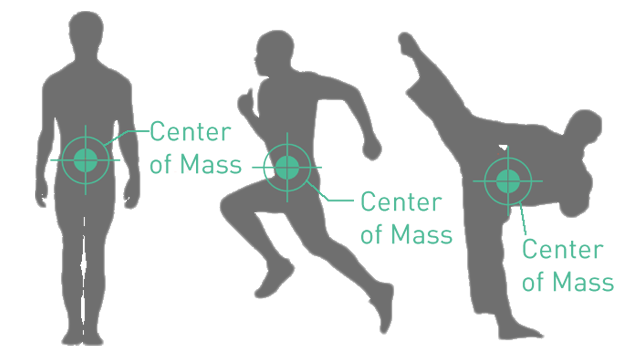Redirection and Balance Breaking
Now that we’ve discussed some aspects of
a strike we can move on to Aikido’s solution to having a
strike thrown at the practitioner.
Aikido’s movements have often been
described as dance like and flowing and these quick evasive
maneuvers are often used to position the defender in an
optimal place to “take the opponents balance”. This means the
practitioner moves to manipulate the attacker’s center of
mass.

Photo Credit:
http://3.bp.blogspot.com/-agseDnVBXlc/U0faykXkuuI/AAAAAAAAFyw/KQQOwKYFaLk/s1600/HardToKill-04-sg.gif
Steven Seagal, while perhaps not the best
actor is a distinguished martial artist and a highly
trained Aikido practitioner. As seen the guy with the
sword is thrown and rotates around his center of mass
while Steven performs no blocks or strikes. If you
focus on just below his navel there really is no
movement in the x or y direction, only his limbs have
movement.
To better visualize the center of mass
for a adult human look at the chart below.

Photo Credit:
https://physicsoftkd.files.wordpress.com/2016/02/center-of-mass.jpg?w=660
By targeting the center of mass (the
“center”), the Aikido practitioner does not lose energy
dealing with flailing limbs. Where the center of mass goes the
limbs will follow.
This focus on the center allows the
Aikido Practitioner to expend very little energy as once the
attacker is off balance, gravity acts to bring them down to
the ground (similar to slipping on ice, once you lose your
balance falling becomes much easier).
This is why Aikido practitioners will
avoid and “dance” around their opponents until they move in
and take the balance of the attacker. This usage of gravity
allows very little energy to be expended as opposed to using
energy to block a strike or to strike back. Aikido takes
advantage of the force of gravity to do the work for the
practitioner.